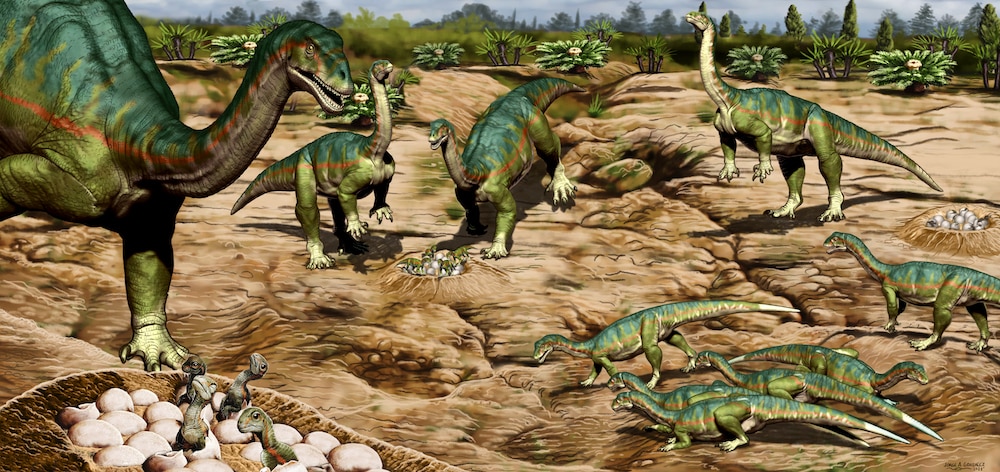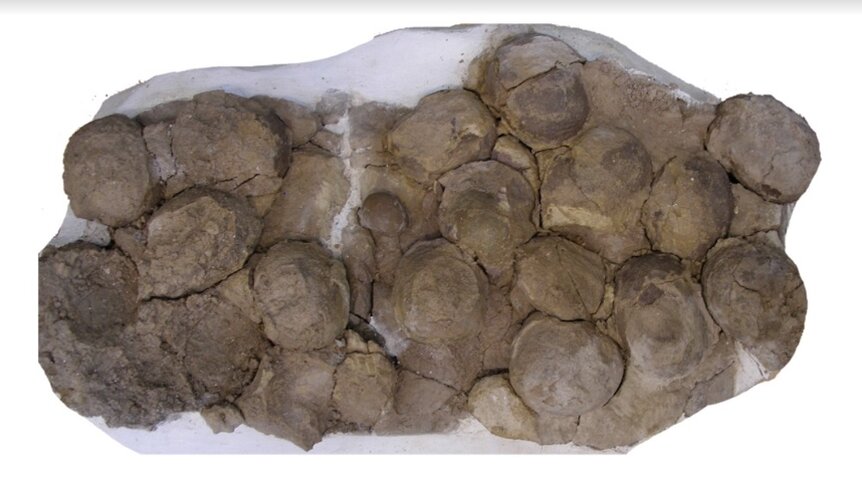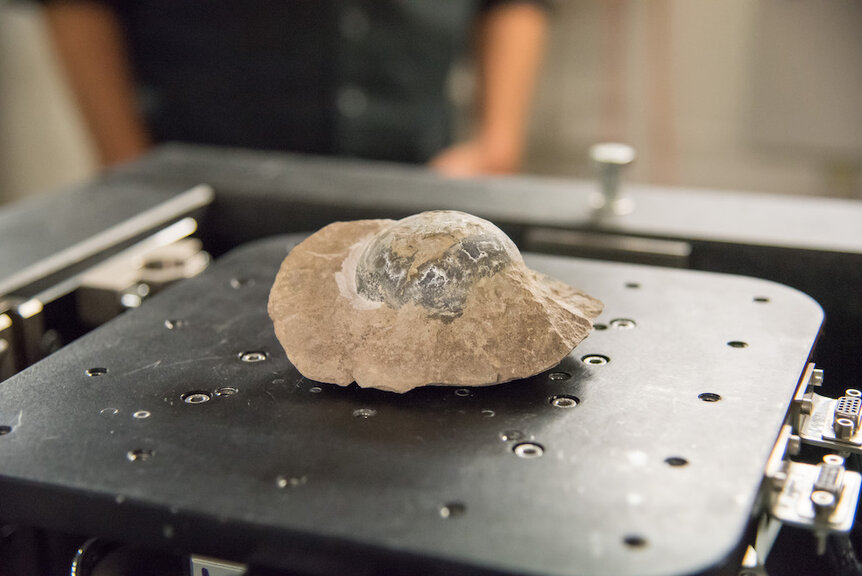Create a free profile to get unlimited access to exclusive videos, sweepstakes, and more!
Okay, boomer. Even dinosaurs lived in age-specific groups
Every generation is embarrassed by the one before it

The common image of many dinosaurs is that of lumbering animals lacking any robust social structures. When we do imagine social behaviors, it’s often associated with pack hunters like the velociraptors of Jurassic Park (despite the rampant inaccuracies of their depiction — we still love it).
New research suggests social behavior may have existed in dinosaurs from the moment they arrived on the scene. Diego Pol is a Principal Researcher at Museo Paleontológico Egidio Feruglio in Argentina. He and his colleagues are studying a unique fossil deposit of Mussaurus patagonicus.
Mussaurus is a sauropodomorph dinosaur, an ancestor of other sauropods like the beloved Brachiosaurus, Apatosaurus, and others. They didn’t quite reach the size of their more famous descendants, but they could still pack a punch.
“These animals had a very wide range of body size,” Pol told SYFY WIRE. “When they were born, they’d fit in the palm of your hand: 60 grams. The adults are 18 feet long and weigh as much as 1.5 tons. As much as a giraffe or a hippo.”
The site of the team’s work, in Patagonia, is unusual for the number of specimens it holds. The first fossils were found there in the 1970s, but it remained unexplored thereafter, until 2002 when Pol visited and found more fossils. A subsequent expedition turned up more skeletons, some eggs, and the realization that the sight needed more detailed attention.
“During the last 10 years, we have been working at the site every summer. We always came back with more fossils. More bones and more eggs,” Pol said.
All told, they’ve gathered more than 100 eggs and more than 80 skeletons, including newborns, juveniles, and adults. The state of the fossils suggests that the animals all died in place, rather than being carried to their resting place by flood waters or shifting soil.
“The site is really one of a kind. There are many places in the world where you have eggs, and a few where you find eggs with embryos. Even fewer have a nesting ground with eggs and embryos. Here, in addition to that, we have the babies, animals that died when they were one or two years old, larger specimens that were five or six years old, and we have adults. All in a square kilometer,” Pol said.
Researchers believe the herd may have fallen victim to a drought or a series of droughts. There is evidence of desiccation in the rock and the region would have been highly seasonal, with drastic changes from summer to winter. Whatever was the true cause of death, their bodies were eventually covered over by wind-blown dust, and it’s that dust that allowed the fossils to be clearly dated.
The dust harbored bits of volcanic ash containing zircon, tiny crystals which contain uranium. Because uranium decays into lead, the team was able to analyze the zircon present in the substrate and dial in to an age, based on the ratio of uranium and lead inside.
“By measuring the amount of uranium and lead you have in your zircon, you can estimate how old the eruption was, which gives a maximum bound for the date of the fossils,” Pol said. “We know the eruption happened 193 million years ago, then the volcanic ash fell into this ancient dust bed. So, we know the site is maybe a thousand years younger than 193 million years.”
We’ve known for some time that at least some of the late-stage dinosaurs had social structures, so that behavior must have developed in dinosaurs at some point along their evolutionary path, but the question of when that happened remained open.
That so many individuals were found together in such a tight space provided initial evidence that they were herding. The stratification along age groups made that evidence stronger. The final piece of the puzzle was confirming the nearby eggs belonged to Mussaurus. Their proximity to the skeletons suggested they belonged to the adults, but the team needed proof. They needed to see inside, preferably without breaking the eggs open.
Initial scans with medical and industrial CT scanners were unable to reveal the contents of the eggs. So, Pol took them to the European Synchrotron Radiation Facility (ESRF) in France. The ESRF is an X-ray particle accelerator capable of delivering X-ray images 100 billion times more powerful than a typical medical X-ray. That did the trick.
“We were able to see inside the egg, these tiny bones of an embryo that were being formed 193 million years ago,” Pol said. “We were able to see the shape of the bones and match the anatomy to the Mussaurus. That was the missing link we needed to say this was a nesting ground. All these animals belonged to the same species."
The large grouping of skeletons, the nesting site, and the age-based stratification paints a clear picture of early sauropodomorph behavior. It shows organization and complex social behavior. Those behaviors may have been crucial for the success of the species, and they were present at least 40 million years earlier than we previously knew.
“The locomotion patterns, the feeding frequency, and the foraging habits are very different if you are 10 kilograms or if you are 1.5 tons,” Pol said. “They move at different speeds, and they may have had different dietary preferences. We are showing that very early dinosaurs show very sophisticated and complex social behavior. It may have been something dinosaurs had from the very beginning.”
It sheds new light on generational rifts. Even in the Jurassic, kids didn’t want to hang with their parents, and maybe that was for the best.




























